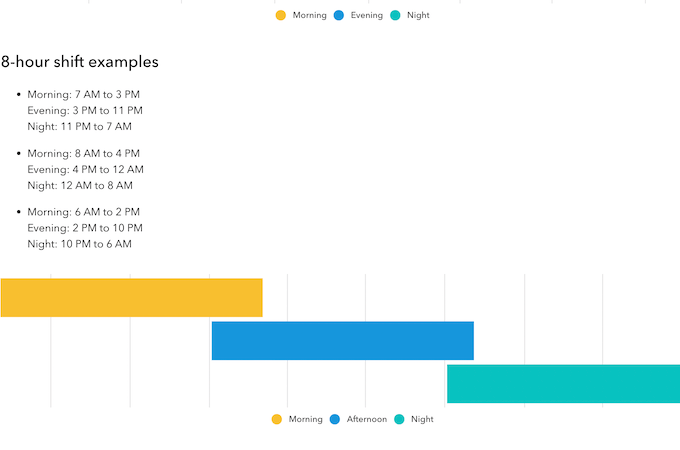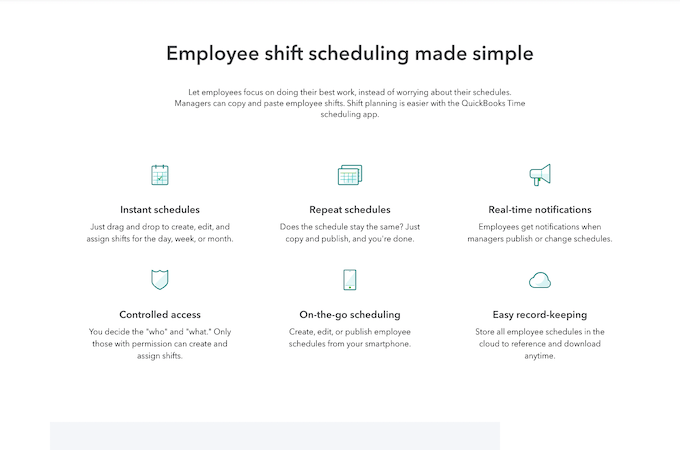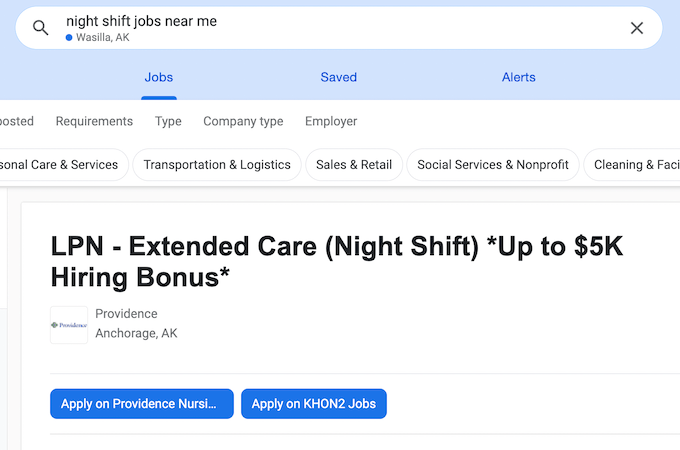Work shifts help employers organize employee schedules. They also enable employees to plan their days, weeks, months, and even years according to their work schedule. Shift schedules also help make sure everyone on the team works a fair amount of hours and gets time to rest between each work period. So what are the different types of work shifts? This guide will explore the basics.
What Are Work Shifts?
A work shift is a block of time during which an employee works at their job. Shifts are defined by the hours they run and typically fall into one of the following four slots within a 24-hour day:
- First shift: Also called the day shift, the first shift aligns with what most people consider normal working hours. For example, 7 pm to 3 pm, 8 pm to 4 pm, or 9 pm to 5 pm. Most companies that keep business hours or “banker’s hours” only have a first or day shift.
- Second shift: Sometimes known as the swing shift, the second shift runs from the end of a company’s first shift to the beginning of its third. This can look like 3 pm to 11 pm or 5 pm to 1 am, although start and end times can vary drastically depending on the industry.
- Third shift: Because it goes against the body’s natural circadian rhythm, the third shift, also known as the night shift or graveyard shift, is known as the toughest one. If you work the third shift, you might work from 8 pm to 4 am or 11 pm to 7 am. But this overnight shift usually pays better than the others.
- Split shift: Sometimes, it makes sense for employees to work two separate shifts within the same day. For example, a restaurant that only serves lunch and dinner might utilize an 11 am to 2 pm shift, followed by a 5 pm to 9 pm shift on the same day.
Now that we’ve covered work shifts according to the time of day, let’s zoom out and explore what the types of work shifts can look like over the days, weeks, and months of a work year.
Fixed Shift
When an employee works the same hours every day for the same amount of days each week, it’s known as a fixed shift. It doesn’t change from week to week or month to month. A dental office might be open Monday through Friday from 9 am to 5 pm, for example, giving the dentists, hygienists, and receptionists in the office a predictable fixed schedule.
Aside from holidays, vacation days, and sick leave, the schedule stays the same.
Fixed shifts are especially beneficial for parents because they take place during typical daycare and school hours, minimizing the need to scramble for childcare at odd hours of the day.
Rotating Shifts
When a company needs employees on the clock for 24 hours of the day, seven days a week, rotating shifts help ensure everyone gets the chance to work the “good” and “bad” shifts.
For example, a 24-hour grocery store might divide its employees into three groups. For two weeks, one group will work the first shift, one will work the second, and one will work the third.

After two weeks, everyone rotates, which helps prevent employees from getting stuck with the most difficult shifts for weeks or months. However, changing shifts often can disrupt a person’s sleep schedule, family life, and leisure time.
Tools like QuickBooks Time can help employers and employees keep track of complicated rotating shift schedules.

2-3-2 Shift
Also called the Pitman shift schedule, a 2-3-2 takes place over 14 days. It might look something like this:
- Work a 12-hour shift on Monday and Tuesday
- Enjoy Wednesday and Thursday off
- Work a 12-hour shift on Friday, Saturday, and Sunday
- Get Monday and Tuesday off
- Work a 12-hour shift on Wednesday and Thursday
- Enjoy a work-free long weekend on Friday, Saturday, and Sunday
The 2-3-2 shift is often used when 24/7 service is required, such as at a hospital or call center. While it requires lengthy shifts, a 2-3-2 shift allows each of four rotating teams to get one long weekend off every other week.
On-Call Shifts
Physicians, plumbers, journalists, and IT technicians all have one thing in common: they’re probably well acquainted with on-call shift work. Being on call means that you’re ready to work the moment your employer calls you in—no matter the time of day or night.
Sometimes, you can go home and spend time with your family while you’re on call. But you’ll need to be able to drop everything and get to work at a moment’s notice. In this type of on-call shift work, you’ll likely only get paid for any time you actually end up working during the shift.
In other situations, you might need to stay at or near your workplace while you’re on call. This should qualify you for on-call pay during the entire time you are in the required area.
On-call shifts help fill the gaps in unpredictable professions. You never know when a patient will experience an emergency, a crucial news story will break, or a pipe will burst. On-call shift workers provide urgent assistance outside of office hours—and this work can pay well.
Four On, Four Off
A four-on, four-off shift means putting in a full week’s worth of work into four day or night shifts—and then taking the next four days off to rest and recover. This type of shift work provides somewhat of a predictable schedule but with the benefit of a longer amount of time off.
And there are plenty of variations, such as three on/three off or five on/five off. As an employee, you know your limits. If you know that you’d have a difficult time working five grueling days or shifts in a row with no time to rest, you might want to stay away—no matter how enticing the idea of five consecutive days off may be.
Employers should also be thinking about this. Before creating four on, four off-type work shifts, employers must consider the type of work the employees must do.
For example, can a physician really give appropriate mental, emotional, and physical energy to patients for five straight shifts—or five long, 12-hour days—in a row? Maybe, but it might not be the best idea.
DuPont Shifts
Developed by—you guessed it—the manufacturing giant, DuPont, these shifts were created in the 1950s to give employees longer stretches of rest after working in DuPont factories for hours on end. Designed to keep a portion of the company’s employees on the clock at all times, the DuPont work shift is 12 hours long.
With a DuPont schedule, four teams rotate through this 28-day cycle:
- 1st Week: Work four night shifts in a row and get three days off
- 2nd Week: Work three day shifts in a row, take one day off, and then work three consecutive night shifts
- 3rd Week: Take three days off and then work four days in a row
- 4th Week: Enjoy seven consecutive days off
Each rotating team gets a week of chill time every 28 days, which can be a huge plus. But on the other hand, the longest work week is a grueling 72 hours.
Examples of Work Shifts in the Real World
Due to the 24/7 nature of hospital life, nurses are known for shorter workweeks and extended workdays. They often work three 12-hour shifts followed by four days off, four 10-hour shifts with three days off, or—particularly in the private practice setting—five eight-hour days with two days off.
Many nurses prefer to work three 12-hour shifts because of the four days they receive to take care of things at home. According to the nursing resource site, Nurse.org, some nurses with children even prefer this intensive schedule over a typical 9 to 5.
However, these shifts can drag on longer than 12 hours, and they take time to recover from—especially if they’re night shifts. But regardless of whether a 12-hour shift takes place during the day or night, working three back-to-back would make anyone bone-weary by the end.
IT departments often utilize night shifts, too—but not because of patients in need of care. When software companies have clients in far-flung time zones, IT departments use night shifts to take care of customers who are awake when everyone in the company’s time zone is asleep.
Companies often utilize different types of work shifts depending on the role. Bakeries and cafés usually employ one or two night bakers to prepare treats for the next day’s customers, for example. But during the daytime, baristas, servers, and dishwashers will cover the first and second shifts.
What to Watch Out for With Different Types of Work Shifts
Burnout is one of the most important things to watch out for when it comes to work shifts. According to the Occupational Safety and Health Administration (OSHA), work that lands outside of the typical 9 to 5 range can:
- Increase the risk of getting hurt while on the job
- Lead to unfavorable eating habits
- Elevate stress levels
- Contribute to health problems
- Result in worker burnout
Whenever you’re applying for a new position, take a look at the types of shifts you’d be working. It’s incredibly important that the work shift matches your needs and strengths. If you struggle to keep your eyes open past 9 pm, avoid the night shift at all costs.
On the other hand, if you’re a night owl who’s regularly up till 4 am anyway, give night shift work a try.
If you hate working several long days in a row, look for a more standard, 9-to-5 work schedule. But if you love having more than two days off to enjoy your personal life, give those long, consecutive shifts a try.
And remember that it’s okay to realize something you’re doing isn’t working after all. If the night shift is negatively affecting your mental health or personal life, talk to your supervisor about trying a different work shift that works for you, your team, and your employer.
Benefits of Different Types of Work Shifts
Imagine if the whole world only worked from 9 am to 5 pm on Monday through Friday. Who would take care of technology emergencies? Who would care for patients at night? Who would type up the news stories we all wake up to in the morning?
Shift work can throw you off balance if you’re not ready for it, but you can always find your footing. Or search for a job with a work schedule that suits you better.
When you’re looking for jobs, try looking for the exact type of shift you want to work. You can narrow your job search on Google, for example, and look specifically for night shift work.

The beauty of different types of work shifts is that there’s something for everyone. Whether you want to get a whole week off every month or tap into your night-loving personality and earn extra cash, there’s a work schedule for you.
Of course, no single type of work shift is all pros and no cons. But if you know your limits and preferences, you can get pretty close.
Final Thoughts About Work Shifts
From first shift to third shift and 2-3-2 to DuPont, humans have dreamed up a dozen ways to do the work that keeps the world spinning. The schedules and shifts we’ve discussed can be combined, adjusted, and tweaked in a hundred unique ways.
Take advantage of employee availability forms to help communicate your ideal work period to potential employers. If you manage both your own business and a team of employees, use employee scheduling software to map out a cohesive work schedule for you and your team.
And remember to rest, relax, and enjoy a favorite pastime on your days off so you can jump back into work with renewed energy—and protect your mental health.
